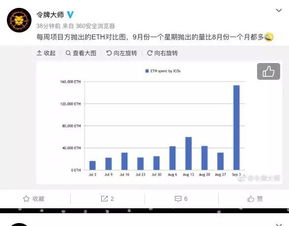你有没有想过,那些在区块链世界里风生水起的ICO(首次币发行)是怎么通过以太坊智能合约完成的呢?今天,就让我带你一探究竟,揭开这个神秘的面纱。

ICO,即Initial Coin Offering,首次币发行,简单来说,就是一家公司通过发行自己的加密货币来筹集资金。这种模式在区块链领域非常流行,因为它不仅为项目提供了资金支持,还能让投资者在项目早期就参与其中。

那么,ICO是怎么通过以太坊智能合约完成的呢?首先,我们需要了解什么是智能合约。
智能合约是一种自动执行合约条款的程序,它运行在区块链上,一旦满足预设条件,就会自动执行。以太坊作为区块链平台,提供了强大的智能合约功能,使得ICO的执行变得简单而高效。

要创建一个ICO智能合约,你需要以下几个关键参数:
1. 募资目标:设定一个募资目标,比如1000个以太币。
3. 代币价格:设定每个代币的价格,比如1个以太币兑换1000个代币。
4. 收款地址:设定收款地址,即募资成功后,资金将转入该地址。
有了这些参数,你就可以使用Solidity语言编写智能合约代码了。以下是一个简单的ICO智能合约示例:
```solidity
pragma solidity ^0.4.16;
contract ICO {
address public owner;
uint256 public fundingGoal;
uint256 public duration;
uint256 public startTime;
uint256 public endTime;
uint256 public tokenPrice;
uint256 public totalCollected;
mapping(address => uint256) public balances;
constructor(uint256 _fundingGoal, uint256 _duration, uint256 _tokenPrice) public {
owner = msg.sender;
fundingGoal = _fundingGoal;
duration = _duration;
startTime = now;
endTime = now + _duration 1 minutes;
tokenPrice = _tokenPrice;
}
function buyTokens() public payable {
require(now >= startTime && now <= endTime, \募资时间已过或未开始\);
require(totalCollected + msg.value <= fundingGoal, \募资目标已达成\);
uint256 tokens = msg.value / tokenPrice;
balances[msg.sender] += tokens;
totalCollected += msg.value;
}
function withdraw() public {
require(msg.sender == owner, \只有合约创建者可以提取资金\);
require(totalCollected >= fundingGoal, \募资目标未达成\);
owner.transfer(totalCollected);
}
在这个示例中,我们创建了一个简单的ICO智能合约,它允许用户在募资时间内购买代币,并在募资成功后提取资金。
当用户购买代币时,他们需要向合约地址发送以太币。合约会自动计算用户可以购买的代币数量,并将代币分配给用户。如果募资成功,合约创建者可以提取资金;如果募资失败,用户可以提取他们购买的代币。
通过以太坊智能合约,ICO的执行变得简单而高效。智能合约确保了合约条款的自动执行,降低了欺诈风险,并为项目提供了可靠的资金支持。随着区块链技术的不断发展,ICO将成为更多项目筹集资金的重要途径。